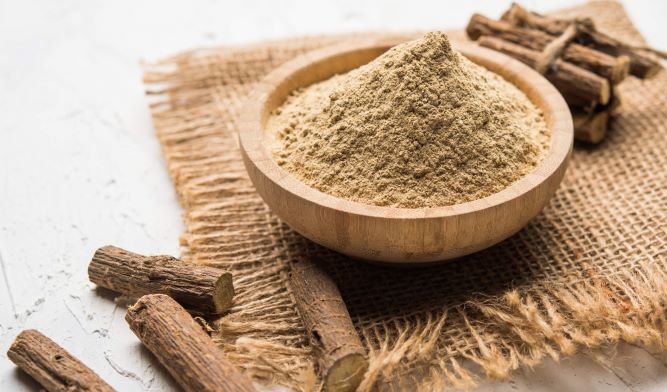 | Licorice Root Extract: Glycyrrhizic Acid ≥98% UV Glycyrrhetinic Acid ≥98% HPLC Stearyl Glycyrrhetinate ≥95% UV Monoammonium Glycyrrhizinate S ≥73% HPLC Monoammonium Glycyrrhizinate A ≥67% HPLC Monoammonium Glycyrrhizinate M ≥65% HPLC Potassium Glycyrrhetate M ≥65% HPLC Monopotassium Glycyrrhizinate A ≥70% HPLC Trisodium Glycyrrhetate ≥65% HPLC Disodium Glycyrrhetate ≥65% HPLC Dipotassium Glycyrrhizinate ≥75% HPLC Tripotassium Glycyrrhizinate ≥15% ≥30% HPLC Diammonium Glycyrrhizinate ≥97% UV Glabridin ≥40% ≥60% ≥80% ≥95% HPLC Glycyrrhizic Flavonoid ≥20% ≥40% ≥50% HPLC Glycyrrhizine R-21 13%-20% HPLC Glycyrrhizine R-19 10%-20% HPLC | |
☆☆☆☆☆☆☆☆☆☆☆☆☆☆☆☆☆☆☆☆☆☆☆☆☆☆☆☆☆☆☆☆☆☆☆☆☆☆☆☆☆☆☆☆☆☆☆☆☆☆☆☆☆☆☆☆☆☆☆☆☆☆☆☆☆☆☆☆☆☆☆☆☆☆☆☆☆☆
Licorice has been used in food and as medicine for thousands of years. Also known as "sweet root," licorice root contains a compound that is about 50 times sweeter than sugar. Licorice root has been used in both Eastern and Western medicine to treat a variety of illnesses, ranging from the common cold to liver disease. It acts as a demulcent, a soothing, coating agent, and as an expectorant, meaning it helps get rid of phlegm. It has been used widely today.

